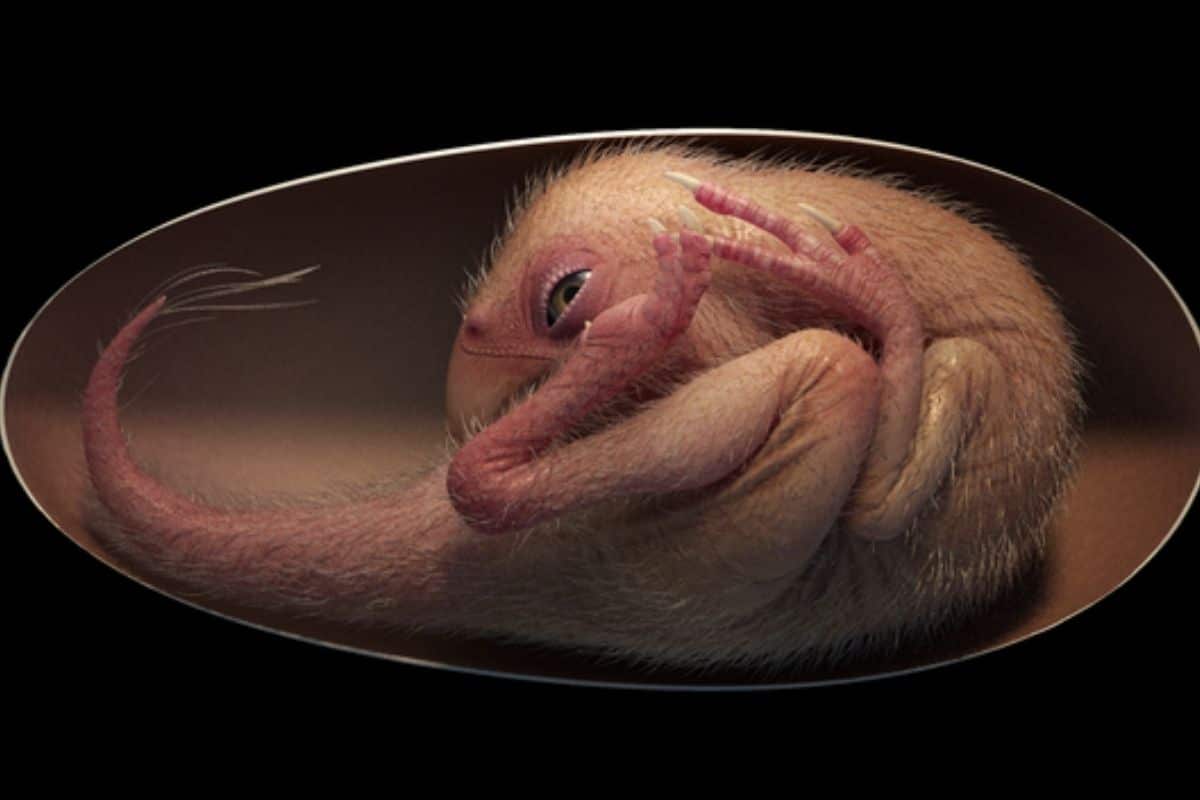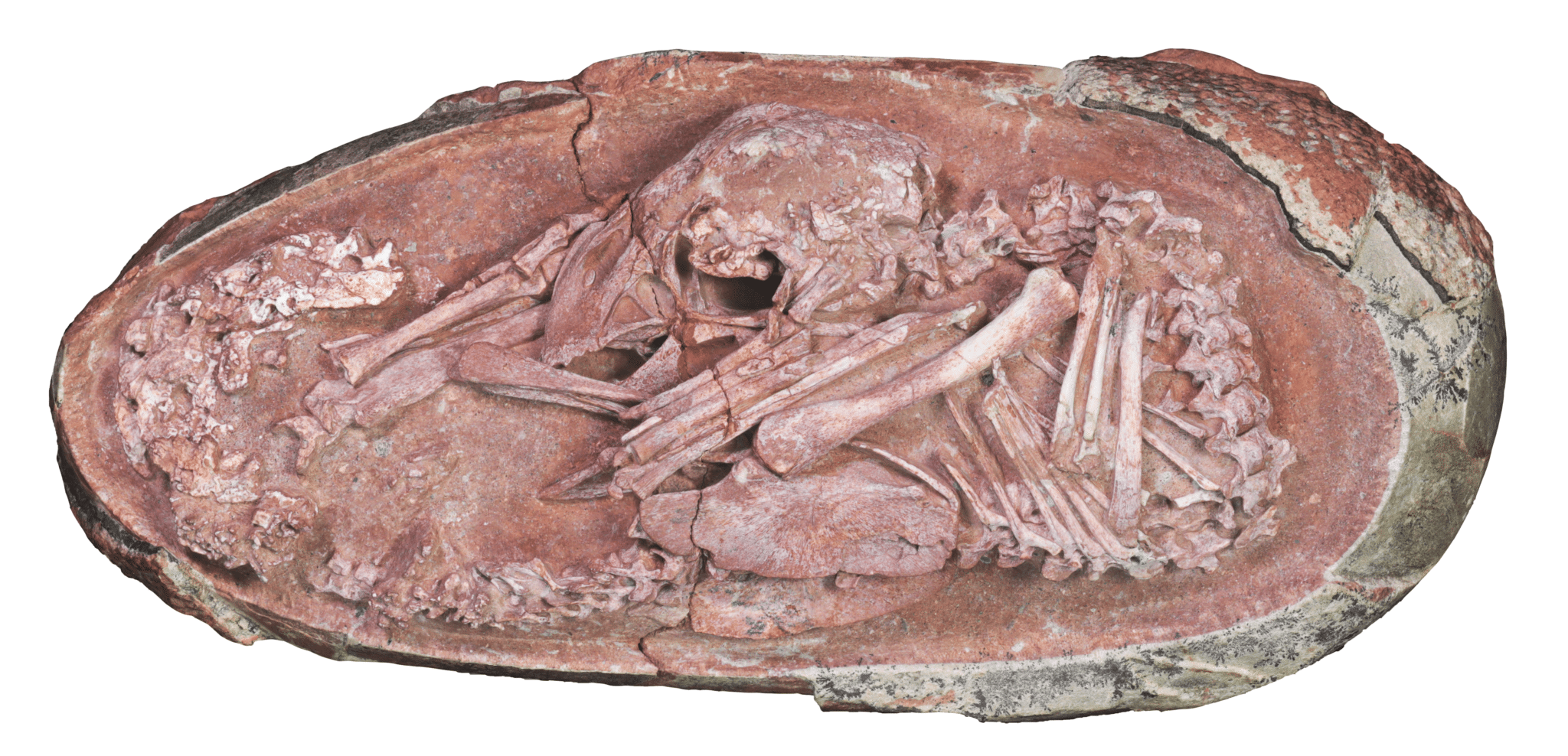
The embryo reveals the surprising way tiny dinosaurs folded inside their eggs.
Quite a few fossilized dinosaur eggs have been recovered over the past century. But rarely did those eggs also harbor a well-preserved dinosaur embryo. No wonder scientists are thrilled with a dinosaur egg recovered several years ago in southern China and now extensively analyzed. The egg turns out to harbor an almost perfectly preserved dinosaur embryo.
Baby Yingliang
The egg – which is about 72 to 66 million years old – was found as early as 2000 in China’s Jiangxi province. It was in danger of being forgotten for a while, until museum employees came across the egg again while putting together a new museum collection. The egg attracted attention because it had already broken in half and the museum employees thought they could detect a few bones in the egg. Closer examination and preparation of the fossil subsequently revealed that it housed a well-preserved dinosaur embryo, which researchers have since dubbed “Baby Yingliang.”
Oviraptorosaurus
Judging by the embryo’s deep, toothless skull, researchers believe the egg harbors a young Oviraptorosaurus. These were feathered, two-legged dinosaurs closely related to modern birds that lived in Asia and North America millions of years ago.
The find is causing some excitement, as the embryo has been preserved almost perfectly and so may provide more insight into how tiny dinosaurs were folded inside their eggs. “We are very excited about the discovery of ‘Baby Yingliang’ – the embryo is excellently preserved and could help us answer many questions about dinosaur growth and reproduction,” said study researcher Fion Waisum Ma.

Here you can see the fossilized dinosaur embryo inside the egg. Image: Xing et al./iScience.
In the bird pose
Thus, the embryo is folded – and this is quite surprising – in the egg in much the same way as modern birds. “We were surprised to find this beautifully preserved embryo, lying in a bird-like pose, inside a dinosaur egg,” Waisum Ma admits. “We’ve never seen this attitude in non-flying dinosaurs before.”

A reconstruction of the dinosaur in the egg. The egg is 17 centimeters long. The embryo is estimated to be 27 centimeters long. Image: Lida Xing.
The dinosaur lies, as it were, folded in half in the egg, with the head emerging just below the belly. The legs are on either side of the body. It is roughly comparable to the position that birds adopt shortly before hatching. The fact that dinosaurs were also familiar with this attitude suggests that it may have already evolved among non-flying dinosaurs. “It’s interesting to see that this dinosaur embryo and a chicken embryo lay in their eggs in a similar way,” said Waisum Ma. “This dinosaur embryo in the egg is one of the most beautiful fossils I’ve ever seen,” said researcher Steve Brusatte. “This little prenatal dinosaur looks just like a baby bird curled up in its egg, further proof that many of the features we see in birds today evolved under their dinosaur ancestors.”
The scientists plan to take a closer look at more fossilized dinosaur embryos to determine with greater certainty that bird embryo attitudes originated among dinosaurs. In addition, Baby Yingliang may also enjoy the attention of scientists in the future; scientists are eager to explore this rare embryo in more detail. Various imaging techniques will be used to further investigate, for example, the bones in the skull that have not yet been exposed.
Source material:
“Exquisitely preserved embryo found inside fossilized dinosaur egg” – University of Birmingham
“Rare dinosaur embryo exquisitely preserved inside the egg suggests bird-like pre-hatching posture” – Cell Press
Image at the top of this article: Lida Xing